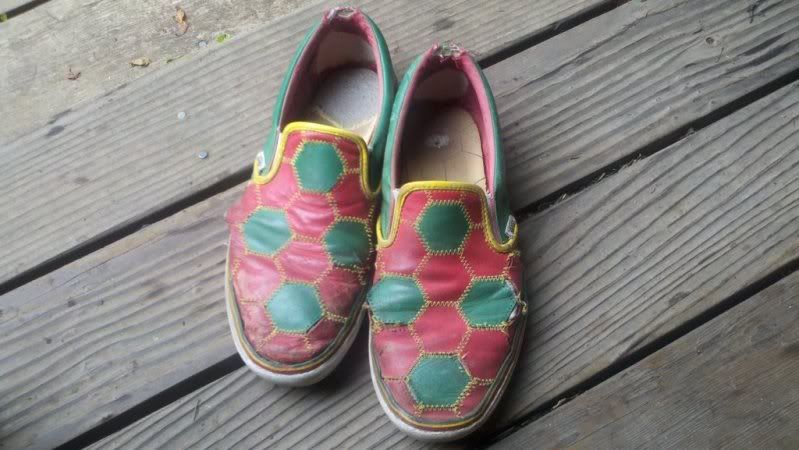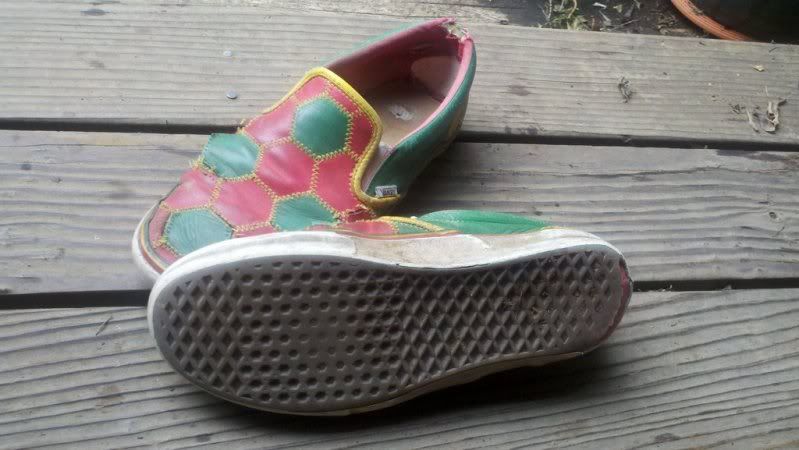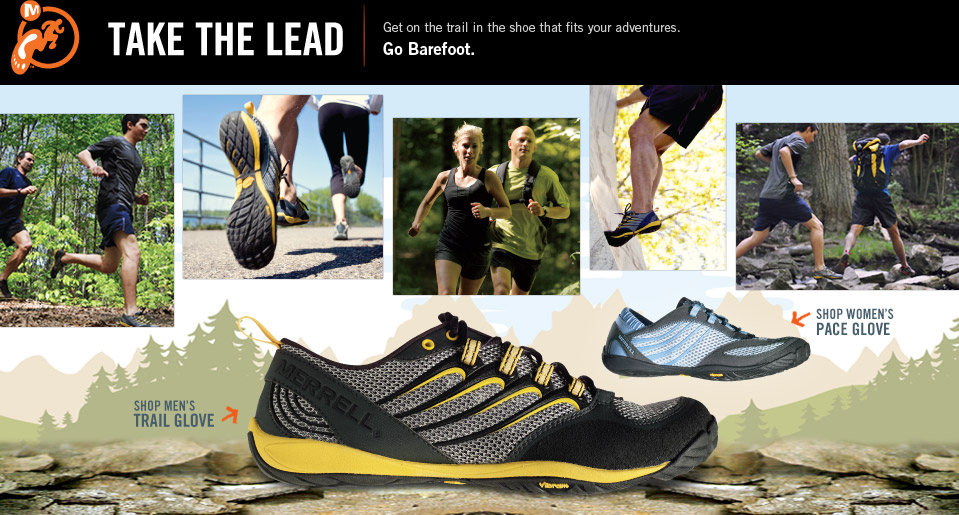I found this video from the Natural Running Store that demonstrates the benefits of a zero drop shoe in a lighthearted and easy to understand way. [youtube=http://youtu.be/prStowbVylE]
Thank you Natural Running Store keep up the good work.
I found this video from the Natural Running Store that demonstrates the benefits of a zero drop shoe in a lighthearted and easy to understand way. [youtube=http://youtu.be/prStowbVylE]
Thank you Natural Running Store keep up the good work.
 The to call the Reebok Realflex a minimalist running shoe, or to say it emulates barefoot running is a real stretch. Much like the Nike Free, the Reebok Realflex is more flexible, more lightweight, and includes fewer support features than the average running shoe, but the toe-to-heel differential alone keeps shoes such as the Reebok Realflex as well as the Nike Free is a slightly different catagory than the most minimalist shoes such as Vibram Five Fingers, Merrel Trail Glove, and the Altra Adam.
The Reebok Realflex, as well as its older brother the Nike Free, are what I like to refer to as "reduced shoes." That is to say, they have some but not all features of minimalist running shoes. In the case of the Reebok Realflex what is missing is a Zero-Drop heel-to-toe differential, as well as a true ground feel.
The to call the Reebok Realflex a minimalist running shoe, or to say it emulates barefoot running is a real stretch. Much like the Nike Free, the Reebok Realflex is more flexible, more lightweight, and includes fewer support features than the average running shoe, but the toe-to-heel differential alone keeps shoes such as the Reebok Realflex as well as the Nike Free is a slightly different catagory than the most minimalist shoes such as Vibram Five Fingers, Merrel Trail Glove, and the Altra Adam.
The Reebok Realflex, as well as its older brother the Nike Free, are what I like to refer to as "reduced shoes." That is to say, they have some but not all features of minimalist running shoes. In the case of the Reebok Realflex what is missing is a Zero-Drop heel-to-toe differential, as well as a true ground feel.
The heel-to-toe differential is the difference in the height of the forefoot of a shoe and the height of the heel of the shoe. In a zero drop shoe this differential is zero. Over the years, running shoes have accumulated more and more heel padding to soften the blow of a heel strike. Though this did make running on your heels more comfortable, it detracted from a natural forefoot stride (notice when running barefoot your heel is not elevated more than your forefoot.) The most minimalist of running shoes have removed the heel to bring it down to the level of the forefoot. Other reduced natural running shoes such as Newtons, or the original Altra, instead of lowering the heel all the way, instead the forefoot was raised to create zero drop heel-to-toe differential.
Because the Reebok Realflex, like the Nike Free, has done nothing to alleviate the heel-to-toe differential I would not classify either as a minimalist or barefoot shoe, but the increased flexibility, and reduced weights show a marked improvement on Reebok's previous line of shoes.
Reebok is marketing the shoe as adding an elevated heel as an improvement on true minimalist shoes, as this cushioned heel will make heel striking more comfortable. As a natural runner however, I am not as interested in comforting my heel strikes as I am in ensuring I don't heel strike in the first place. and, let's face it they did not improve upon a minimalist shoe by adding a heel, Reebok and Nike have both improved upon all their other shoes by making them flexible and lightweight.
Here is the Reebok Realflex promo video, if you are in marketing and enjoy running, after viewing this video I am confident a marketing position will be opening up soon at Reebok.
[youtube=http://www.youtube.com/watch?v=N6h1SMjQEog]
Notice the heel striking even in the promotional video.
[youtube=http://www.youtube.com/watch?v=xyXP2-hYvSs]
 Two years ago I bought a my first pair of Vans. I paid six dollars for them at a thrift store in Berkeley. At the time I had never even considered Vans as a viable choice for a running shoe. As a crew leader for the northwest youth corps I was to spend a few months camping and I was looking for a comfortable slip on slip off shoe to wear when not wearing OSHA required 7 inch leather work boots. The shoes survived 3 months in the back country with barely any blemishes. In those three months I fell in love, so I have been wearing my Van's pretty much everyday since then.
Tonight, for the first time I decided to were my Van's during my speed workout with the Tamalpa Club. Two words, Amazing. Okay, so just one word. I was blown away by how comfortable it is to run in my Van's. Then during my second mile repeat I began to analyze them, and it turns out that my six dollar Van's have all the key features that one should look for in a Minimalist shoe.
Two years ago I bought a my first pair of Vans. I paid six dollars for them at a thrift store in Berkeley. At the time I had never even considered Vans as a viable choice for a running shoe. As a crew leader for the northwest youth corps I was to spend a few months camping and I was looking for a comfortable slip on slip off shoe to wear when not wearing OSHA required 7 inch leather work boots. The shoes survived 3 months in the back country with barely any blemishes. In those three months I fell in love, so I have been wearing my Van's pretty much everyday since then.
Tonight, for the first time I decided to were my Van's during my speed workout with the Tamalpa Club. Two words, Amazing. Okay, so just one word. I was blown away by how comfortable it is to run in my Van's. Then during my second mile repeat I began to analyze them, and it turns out that my six dollar Van's have all the key features that one should look for in a Minimalist shoe.
The toe to heel differential is Zero, it doesn't get any better than that.
 Thin flexible sole
Thin flexible soleThe sole is only millimeters thick. I may not be able to pick up toothpicks with my toes while wearing these shoes, but I can certainly feel changes in the terrain beneath my feet. Granted, I have had my Van's for two years, and I bought them used, so they are quite broken in, but I have no doubt that a new pair is nearly as thin and flexible.
There is plenty of room up there, vans are obviously designed for comfort.
None
Okay, they could be lighter, but they are no heavier than a traditional running shoe. I didn't weigh them, but I estimate about 11 ounces. The pair that I am reviewing is made from waterproofed leather. Not the lightest material, but it has withstood the test of time. That brings me to my next point, the thing i look for in any shoe, or any apparel I buy... durability.
These are typically my everyday shoes. this means that I have work them hiking, hooping, playing flag football, dancing and pretty much any other activity you can imagine me doing in my everyday life, but not until tonight did I wear them purely as a running shoe. This means in purely running miles these shoes only have 7 miles on them. However, I should remind you that these shoes have lasted at least two years of everyday wear and tear, including three months in the back country. We must also keep in mind that I bought the shoes used. The shoes are no longer Sunday shoes but by all in all they have held up very well. Having newly discovered their awesomeness as a low cost minimalist shoe, I will continue to run in them (at least until my Merell trail gloves arrive in the mail) and I will keep you updated as to how the feel after two or three hundred miles.
Final feeling on Van's as a minimalist running shoe... they are great. they probably won't be my primary pair but they make an amazing back up pair, and are perfect for anybody that is just beginning barefoot or minimalist running, or those looking for a low cost minimalist shoe.
I have a sneaky suspicion that converse all-stars are also great minimalist shoes, and I also know that there are lots of them out there, so if any of you have tried Converse all-stars as a running shoe, I would love to post your review on RunNaturally.org.
Run Happy, Levi
 With its February 1st 2011 release of its Merrell Trail Glove, Merrell has become the first major shoe brand to release a zero drop running shoe that looks like a running shoe. I applaud merrell for their bravery in actually following through with a true Zero-Drop barefoot running shoe, and I reward them by buying a pair today. I have been anticipating these shoe for months I am so excited they are finally here.
Also check out the barefoot training section Merrell has added to their site. Barefoot Connection.
With its February 1st 2011 release of its Merrell Trail Glove, Merrell has become the first major shoe brand to release a zero drop running shoe that looks like a running shoe. I applaud merrell for their bravery in actually following through with a true Zero-Drop barefoot running shoe, and I reward them by buying a pair today. I have been anticipating these shoe for months I am so excited they are finally here.
Also check out the barefoot training section Merrell has added to their site. Barefoot Connection.
Read an in depth review of the Merrell Trail Glove from Jason Robillard Author of The Barefoot Running Book. Read the Full Review
Update: Our Merrel Trail Glove Review is now ready.
I first started running when I was in high school. I decided to join the track team because I had a crush on a girl that ran track. What can I say, girls that run track are hot. I only ran my senior year before getting recruited at the college level. All through out college I was plagued every season with injury after injury. Plantar fasciitis, stress fractures, tendinitis, my joints creaked and popped with every step. In those days I never considered form. I thought injury was just a natural part of running, and I was running 70 to 90 miles per week. Despite injury I managed to perform well enough to make it on the national team 4 times and eventually become All-American my senior year. It wasn't until after college that I began to discover the cause of my injuries. It was 2001 while I was attempting to run through a sever case of plantar fasciitis while training for my first full marathon. In college I always just went to the trainer and he would say "Well, ice it and stay off it for a while." This always managed to deal with the immediate problem, but it never confronted the cause.
With no trainer to turn to, and myself studying to become a personal trainer, I did the research on my own. come to find out I, like 75% of shod runners was a heel striker, (a common flaw in shod running populations.) Come to find out, landing on your heels with each stride creates an enormous impact with each stride, (estimated about 3x body weight.) The answer then is to decrease the impact. to decrease the impact I needed to change to a forefoot stride. The process I used to do this is simply running barefoot.
I don't know why I had never considered this before, after all this is how humans ran for about 6 million years. Come to find out, nearly all shod runners that transition to barefoot, not just myself, will naturally transition to a forefoot stride, because when barefoot it is uncomfortable to run on your heels.
Barefoot runners have also noticed it is uncomfortable to run on your heels. Shoe companies have noticed this also and have attempted to fix this by padding the heel. this did make it more comfortable, but it is not the appropriate solution. If it is uncomfortable to run on your heels, don't run on your heels. After I discovered this it just seemed like common sense. If it hurts every time you punch yourself in the face, is it better to put on a boxing glove, or simply to not punch yourself in the face. Perhaps not the best analogy, but I think you get the point.
Transitioning to barefoot was not easy. I started out just a mile at a time, and after each run my calves were sore like I had never used them before, (really I hadn't.) It took months to condition my calves to barefoot running, in the mean time I put in most my miles shod, but focusing on the fore foot strike.
After allowing my body to learn to run barefoot, I then transitioned into minimalist shoes. Running barefoot is an excellent training technique to find natural running form, but running barefoot does admittedly become uncomfortable after a certain number of miles dependent on the terrain. For this reason, I now do most of my running in minimalist running shoes, but on occasion will still run barefoot to ensure I am not altering my natural running form.